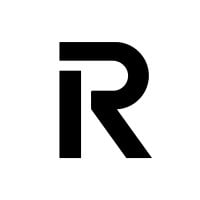
Nasdaq Company Cyber Security Posture
nasdaq.comAt Nasdaq, our purpose is to advance economic progress for all. We power stronger economies, create more equitable opportunities, and contribute to a more sustainable world to help our communities, clients, employees, and people of all backgrounds reach their full potential. Meet the #NasdaqFam and learn about our purpose, culture and careers here: https://www.nasdaq.com/about/careers
Nasdaq Company Details
nasdaq
7247 employees
525369.0
52
Financial Services
nasdaq.com
Scan still pending
NAS_5937072
In-progress
Between 800 and 900
This score is AI-generated and less favored by cyber insurers, who prefer the TPRM score.
 Nasdaq Global Score
Nasdaq Global Score.png)

Nasdaq Company Scoring based on AI Models
| Model Name | Date | Description | Current Score Difference | Score |
|---|---|---|---|---|
| AVERAGE-Industry | 03-12-2025 | This score represents the average cybersecurity rating of companies already scanned within the same industry. It provides a benchmark to compare an individual company's security posture against its industry peers. | N/A | Between 800 and 900 |
Nasdaq Company Cyber Security News & History
| Entity | Type | Severity | Impact | Seen | Url ID | Details | View |
|---|---|---|---|---|---|---|---|
| Nasdaq | Cyber Attack | 100 | 5 | 02/2018 | NAS18568622 | Link | |
Rankiteo Explanation : Attack threatening the organization's existenceDescription: Two Russian men convicted of their involvement in a massive hack of the Nasdaq stock exchange, Citibank, and other major companies have been given hefty sentences. The two men, Vladimir Drinkman and Dmitriy Smilianets, pleaded guilty in 2015. Drinkman was sentenced to 144 months, while Smilianets was given 51 months. | |||||||
| Nasdaq | Data Leak | 85 | 4 | 06/2019 | NAS31826323 | Link | |
Rankiteo Explanation : Attack with significant impact with customers data leaksDescription: A major data leak at the Tech Data Corporation NASDAQ was discovered by the research team at vpnMentor. The breach exposed access to 264GB of Tech Data’s client servers, invoices, SAP integrations, plain-text passwords. This contained email and personal user data, as well as reseller contact and invoice information, payment and credit card data, internal security logs, unencrypted logins and passwords, and more. This was a serious leak as far as we could see, so much so that all of the credentials needed to log in to customer accounts were available. | |||||||
Nasdaq Company Subsidiaries

At Nasdaq, our purpose is to advance economic progress for all. We power stronger economies, create more equitable opportunities, and contribute to a more sustainable world to help our communities, clients, employees, and people of all backgrounds reach their full potential. Meet the #NasdaqFam and learn about our purpose, culture and careers here: https://www.nasdaq.com/about/careers
Access Data Using Our API

Get company history
.png)
Nasdaq Cyber Security News
SailPoint jumps as cybersecurity firm ups full-year earnings outlook (SAIL:NASDAQ)
SailPoint (SAIL) shares rose 11% in premarket trading on Wednesday after the cybersecurity firm upped its full-year earnings outlook, ...
3 Top Cybersecurity Stocks to Buy in June
Zscaler (NASDAQ: ZS) deploys "zero trust" systems that treat everyone on a network as a potential threat and require repeated proof to the ...
ZS vs. QLYS: Which Cybersecurity Stock is the Smarter Pick Now?
Zscaler ZS and Qualys QLYS are two key cybersecurity players offering critical solutions in securing enterprise environments.
CrowdStrike Q1: Alpha-Rich And Resilient Cybersecurity Domination
CrowdStrike's Falcon platform leads cybersecurity with AI-driven innovation, strong growth, and solid cash flow. See why we recommend a buy ...
AI-Driven Growth Makes These 4 Cybersecurity Stocks a Must-Buy
Cybersecurity stocks are poised to benefit from rising cyber threats amid accelerating digital transformation and cloud migration.
Q1 Earnings Highlights: Okta (NASDAQ:OKTA) Vs The Rest Of The Cybersecurity Stocks
As the craze of earnings season draws to a close, here's a look back at some of the most exciting (and some less so) results from Q1.
Cybersecurity ETF (CIBR) Hits New 52-Week High
CIBR hits a 52-week high as AI-driven demand and rising cyber threats fuel momentum in cybersecurity stocks.
SentinelOne vs. Fortinet: Which Cybersecurity Stock is the Better Buy?
S is outpacing FTNT in AI-led security, platform growth and adoption across the enterprise and public sectors.
PANW vs. CYBR: Which Cybersecurity Stock is the Better Buy Now?
CYBR gains ground on PANW with standout earnings, AI-powered tools and expanding market reach.

Nasdaq Similar Companies

PT. Finansia Multi Finance
PT Finansia Multi Finance (“FMF” or “the Company”) was founded in 1994 by a consortium of local banking executives – including the current President Director. FMF received its multifinance licence in 1994 and is fully licenced to conduct a full range of multifinance activities including consumer fin

JPMorganChase
With a history tracing its roots to 1799 in New York City, JPMorganChase is one of the world's oldest, largest, and best-known financial institutions—carrying forth the innovative spirit of our heritage firms in global operations across 100 markets. We serve millions of customers and many of the w

Otkritie
OTKRITIE Financial Corporation is one of the most dynamic and fastest growing investment banks in Russia. The company has been operating on the stock market as a broker, asset manager, financial advisor and investment bank since 1995. OTKRITIE FC has become a trusted partner for many Russian and int

Revolut
People deserve more from their money. More visibility, more control, and more freedom. Since 2015, Revolut has been on a mission to deliver just that. Our powerhouse of products help our 50+ million customers get more from their money every day. As we continue our lightning-fast growth, 2 things a

Goldman Sachs
At Goldman Sachs, we believe progress is everyone’s business. That’s why we commit our people, capital and ideas to help our clients, shareholders and the communities we serve to grow. Founded in 1869, Goldman Sachs is a leading global investment banking, securities and investment management firm. H

Legal & General
Legal & General is a leading UK financial services group and major global investor. Our three divisions enable us to carefully invest capital over the long term in a responsible way that delivers returns to shareholders while doing good. Along with growing our pension risk transfer business, our s

Frequently Asked Questions (FAQ) on Cybersecurity Incidents
Nasdaq CyberSecurity History Information
Total Incidents: According to Rankiteo, Nasdaq has faced 2 incidents in the past.
Incident Types: The types of cybersecurity incidents that have occurred include ['Cyber Attack', 'Data Leak'].
Total Financial Loss: The total financial loss from these incidents is estimated to be {total_financial_loss}.
Cybersecurity Posture: The company's overall cybersecurity posture is described as At Nasdaq, our purpose is to advance economic progress for all. We power stronger economies, create more equitable opportunities, and contribute to a more sustainable world to help our communities, clients, employees, and people of all backgrounds reach their full potential. Meet the #NasdaqFam and learn about our purpose, culture and careers here: https://www.nasdaq.com/about/careers.
Detection and Response: The company detects and responds to cybersecurity incidents through {description_of_detection_and_response_process}.
Incident Details
Incident 1: Ransomware Attack
Title: {Incident_Title}
Description: {Brief_description_of_the_incident}
Date Detected: {Detection_Date}
Date Publicly Disclosed: {Disclosure_Date}
Date Resolved: {Resolution_Date}
Type: {Type_of_Attack}
Attack Vector: {Attack_Vector}
Vulnerability Exploited: {Vulnerability}
Threat Actor: {Threat_Actor}
Motivation: {Motivation}
Incident 2: Data Breach
Title: {Incident_Title}
Description: {Brief_description_of_the_incident}
Date Detected: {Detection_Date}
Date Publicly Disclosed: {Disclosure_Date}
Date Resolved: {Resolution_Date}
Type: {Type_of_Attack}
Attack Vector: {Attack_Vector}
Vulnerability Exploited: {Vulnerability}
Threat Actor: {Threat_Actor}
Motivation: {Motivation}
Common Attack Types: As of now, the company has not encountered any reported incidents involving common cyberattacks.
Identification of Attack Vectors: The company identifies the attack vectors used in incidents through {description_of_identification_process}.
Impact of the Incidents
Incident 1: Ransomware Attack
Financial Loss: {Financial_Loss}
Data Compromised: {Data_Compromised}
Systems Affected: {Systems_Affected}
Downtime: {Downtime}
Operational Impact: {Operational_Impact}
Conversion Rate Impact: {Conversion_Rate_Impact}
Revenue Loss: {Revenue_Loss}
Customer Complaints: {Customer_Complaints}
Brand Reputation Impact: {Brand_Reputation_Impact}
Legal Liabilities: {Legal_Liabilities}
Identity Theft Risk: {Identity_Theft_Risk}
Payment Information Risk: {Payment_Information_Risk}
Incident 2: Data Breach
Financial Loss: {Financial_Loss}
Data Compromised: {Data_Compromised}
Systems Affected: {Systems_Affected}
Downtime: {Downtime}
Operational Impact: {Operational_Impact}
Conversion Rate Impact: {Conversion_Rate_Impact}
Revenue Loss: {Revenue_Loss}
Customer Complaints: {Customer_Complaints}
Brand Reputation Impact: {Brand_Reputation_Impact}
Legal Liabilities: {Legal_Liabilities}
Identity Theft Risk: {Identity_Theft_Risk}
Payment Information Risk: {Payment_Information_Risk}
Average Financial Loss: The average financial loss per incident is {average_financial_loss}.
Commonly Compromised Data Types: The types of data most commonly compromised in incidents are {list_of_commonly_compromised_data_types}.
Incident 1: Ransomware Attack
Entity Name: {Entity_Name}
Entity Type: {Entity_Type}
Industry: {Industry}
Location: {Location}
Size: {Size}
Customers Affected: {Customers_Affected}
Incident 2: Data Breach
Entity Name: {Entity_Name}
Entity Type: {Entity_Type}
Industry: {Industry}
Location: {Location}
Size: {Size}
Customers Affected: {Customers_Affected}
Response to the Incidents
Incident 1: Ransomware Attack
Incident Response Plan Activated: {Yes/No}
Third Party Assistance: {Yes/No}
Law Enforcement Notified: {Yes/No}
Containment Measures: {Containment_Measures}
Remediation Measures: {Remediation_Measures}
Recovery Measures: {Recovery_Measures}
Communication Strategy: {Communication_Strategy}
Adaptive Behavioral WAF: {Adaptive_Behavioral_WAF}
On-Demand Scrubbing Services: {On_Demand_Scrubbing_Services}
Network Segmentation: {Network_Segmentation}
Enhanced Monitoring: {Enhanced_Monitoring}
Incident 2: Data Breach
Incident Response Plan Activated: {Yes/No}
Third Party Assistance: {Yes/No}
Law Enforcement Notified: {Yes/No}
Containment Measures: {Containment_Measures}
Remediation Measures: {Remediation_Measures}
Recovery Measures: {Recovery_Measures}
Communication Strategy: {Communication_Strategy}
Adaptive Behavioral WAF: {Adaptive_Behavioral_WAF}
On-Demand Scrubbing Services: {On_Demand_Scrubbing_Services}
Network Segmentation: {Network_Segmentation}
Enhanced Monitoring: {Enhanced_Monitoring}
Incident Response Plan: The company's incident response plan is described as {description_of_incident_response_plan}.
Third-Party Assistance: The company involves third-party assistance in incident response through {description_of_third_party_involvement}.
Data Breach Information
Incident 2: Data Breach
Type of Data Compromised: {Type_of_Data}
Number of Records Exposed: {Number_of_Records}
Sensitivity of Data: {Sensitivity_of_Data}
Data Exfiltration: {Yes/No}
Data Encryption: {Yes/No}
File Types Exposed: {File_Types}
Personally Identifiable Information: {Yes/No}
Prevention of Data Exfiltration: The company takes the following measures to prevent data exfiltration: {description_of_prevention_measures}.
Handling of PII Incidents: The company handles incidents involving personally identifiable information (PII) through {description_of_handling_process}.
Ransomware Information
Incident 1: Ransomware Attack
Ransom Demanded: {Ransom_Amount}
Ransom Paid: {Ransom_Paid}
Ransomware Strain: {Ransomware_Strain}
Data Encryption: {Yes/No}
Data Exfiltration: {Yes/No}
Ransom Payment Policy: The company's policy on paying ransoms in ransomware incidents is described as {description_of_ransom_payment_policy}.
Data Recovery from Ransomware: The company recovers data encrypted by ransomware through {description_of_data_recovery_process}.
Regulatory Compliance
Incident 1: Ransomware Attack
Regulations Violated: {Regulations_Violated}
Fines Imposed: {Fines_Imposed}
Legal Actions: {Legal_Actions}
Regulatory Notifications: {Regulatory_Notifications}
Incident 2: Data Breach
Regulations Violated: {Regulations_Violated}
Fines Imposed: {Fines_Imposed}
Legal Actions: {Legal_Actions}
Regulatory Notifications: {Regulatory_Notifications}
Regulatory Frameworks: The company complies with the following regulatory frameworks regarding cybersecurity: {list_of_regulatory_frameworks}.
Ensuring Regulatory Compliance: The company ensures compliance with regulatory requirements through {description_of_compliance_measures}.
Lessons Learned and Recommendations
Incident 1: Ransomware Attack
Lessons Learned: {Lessons_Learned}
Incident 2: Data Breach
Lessons Learned: {Lessons_Learned}
Incident 1: Ransomware Attack
Recommendations: {Recommendations}
Incident 2: Data Breach
Recommendations: {Recommendations}
Key Lessons Learned: The key lessons learned from past incidents are {list_of_key_lessons_learned}.
Implemented Recommendations: The company has implemented the following recommendations to improve cybersecurity: {list_of_implemented_recommendations}.
References
Additional Resources: Stakeholders can find additional resources on cybersecurity best practices at {list_of_additional_resources}.
Investigation Status
Incident 1: Ransomware Attack
Investigation Status: {Investigation_Status}
Incident 2: Data Breach
Investigation Status: {Investigation_Status}
Communication of Investigation Status: The company communicates the status of incident investigations to stakeholders through {description_of_communication_process}.
Stakeholder and Customer Advisories
Incident 1: Ransomware Attack
Stakeholder Advisories: {Stakeholder_Advisories}
Customer Advisories: {Customer_Advisories}
Incident 2: Data Breach
Stakeholder Advisories: {Stakeholder_Advisories}
Customer Advisories: {Customer_Advisories}
Advisories Provided: The company provides the following advisories to stakeholders and customers following an incident: {description_of_advisories_provided}.
Initial Access Broker
Incident 1: Ransomware Attack
Entry Point: {Entry_Point}
Reconnaissance Period: {Reconnaissance_Period}
Backdoors Established: {Backdoors_Established}
High Value Targets: {High_Value_Targets}
Data Sold on Dark Web: {Yes/No}
Incident 2: Data Breach
Entry Point: {Entry_Point}
Reconnaissance Period: {Reconnaissance_Period}
Backdoors Established: {Backdoors_Established}
High Value Targets: {High_Value_Targets}
Data Sold on Dark Web: {Yes/No}
Monitoring and Mitigation of Initial Access Brokers: The company monitors and mitigates the activities of initial access brokers through {description_of_monitoring_and_mitigation_measures}.
Post-Incident Analysis
Incident 1: Ransomware Attack
Root Causes: {Root_Causes}
Corrective Actions: {Corrective_Actions}
Incident 2: Data Breach
Root Causes: {Root_Causes}
Corrective Actions: {Corrective_Actions}
Post-Incident Analysis Process: The company's process for conducting post-incident analysis is described as {description_of_post_incident_analysis_process}.
Corrective Actions Taken: The company has taken the following corrective actions based on post-incident analysis: {list_of_corrective_actions_taken}.
Additional Questions
General Information
Ransom Payment History: The company has {paid/not_paid} ransoms in the past.
Last Ransom Demanded: The amount of the last ransom demanded was {last_ransom_amount}.
Last Attacking Group: The attacking group in the last incident was {last_attacking_group}.
Incident Details
Most Recent Incident Detected: The most recent incident detected was on {most_recent_incident_detected_date}.
Most Recent Incident Publicly Disclosed: The most recent incident publicly disclosed was on {most_recent_incident_publicly_disclosed_date}.
Most Recent Incident Resolved: The most recent incident resolved was on {most_recent_incident_resolved_date}.
Impact of the Incidents
Highest Financial Loss: The highest financial loss from an incident was {highest_financial_loss}.
Most Significant Data Compromised: The most significant data compromised in an incident was {most_significant_data_compromised}.
Most Significant System Affected: The most significant system affected in an incident was {most_significant_system_affected}.
Response to the Incidents
Third-Party Assistance in Most Recent Incident: The third-party assistance involved in the most recent incident was {third_party_assistance_in_most_recent_incident}.
Containment Measures in Most Recent Incident: The containment measures taken in the most recent incident were {containment_measures_in_most_recent_incident}.
Data Breach Information
Most Sensitive Data Compromised: The most sensitive data compromised in a breach was {most_sensitive_data_compromised}.
Number of Records Exposed: The number of records exposed in the most significant breach was {number_of_records_exposed}.
Ransomware Information
Highest Ransom Demanded: The highest ransom demanded in a ransomware incident was {highest_ransom_demanded}.
Highest Ransom Paid: The highest ransom paid in a ransomware incident was {highest_ransom_paid}.
Regulatory Compliance
Highest Fine Imposed: The highest fine imposed for a regulatory violation was {highest_fine_imposed}.
Most Significant Legal Action: The most significant legal action taken for a regulatory violation was {most_significant_legal_action}.
Lessons Learned and Recommendations
Most Significant Lesson Learned: The most significant lesson learned from past incidents was {most_significant_lesson_learned}.
Most Significant Recommendation Implemented: The most significant recommendation implemented to improve cybersecurity was {most_significant_recommendation_implemented}.
References
Most Recent Source: The most recent source of information about an incident is {most_recent_source}.
Most Recent URL for Additional Resources: The most recent URL for additional resources on cybersecurity best practices is {most_recent_url}.
Investigation Status
Current Status of Most Recent Investigation: The current status of the most recent investigation is {current_status_of_most_recent_investigation}.
Stakeholder and Customer Advisories
Most Recent Stakeholder Advisory: The most recent stakeholder advisory issued was {most_recent_stakeholder_advisory}.
Most Recent Customer Advisory: The most recent customer advisory issued was {most_recent_customer_advisory}.
Initial Access Broker
Most Recent Entry Point: The most recent entry point used by an initial access broker was {most_recent_entry_point}.
Most Recent Reconnaissance Period: The most recent reconnaissance period for an incident was {most_recent_reconnaissance_period}.
Post-Incident Analysis
Most Significant Root Cause: The most significant root cause identified in post-incident analysis was {most_significant_root_cause}.
Most Significant Corrective Action: The most significant corrective action taken based on post-incident analysis was {most_significant_corrective_action}.
What Do We Measure?
















Every week, Rankiteo analyzes billions of signals to give organizations a sharper, faster view of emerging risks. With deeper, more actionable intelligence at their fingertips, security teams can outpace threat actors, respond instantly to Zero-Day attacks, and dramatically shrink their risk exposure window.
These are some of the factors we use to calculate the overall score:
Identify exposed access points, detect misconfigured SSL certificates, and uncover vulnerabilities across the network infrastructure.
Gain visibility into the software components used within an organization to detect vulnerabilities, manage risk, and ensure supply chain security.
Monitor and manage all IT assets and their configurations to ensure accurate, real-time visibility across the company's technology environment.
Leverage real-time insights on active threats, malware campaigns, and emerging vulnerabilities to proactively defend against evolving cyberattacks.




